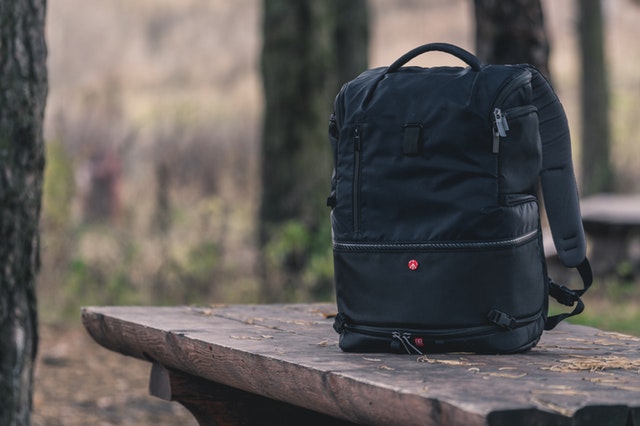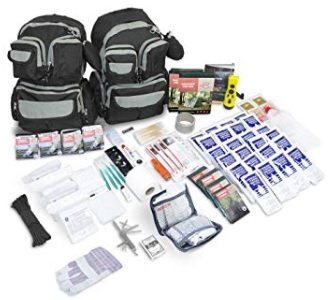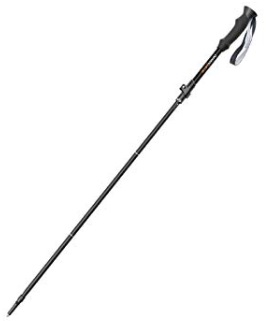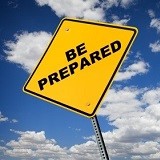
We are not city people! Why would we need bug-out bags?
Okay, so maybe we should first explain what a bug-out bag is. A Bug Out Bag is essentially a survival kit prepared in advance, and pre-packed in a type of bag for fast retrieval in emergency situations. They are generally used by survivalists who live in cities, so if there’s a disaster they can grab the bag and head for the hills (called “bugging out”). The bag contains the essentials needed to start a new life somewhere else.
We in Randolph County already live in the hills, free from crowds of unprepared people desperate for food and fuel during a disaster. If an emergency happens here, we will probably stay put and guard against city people coming here wanting what we already have.
But here’s a scenario you may not have considered: what if an EMP disaster hits while you’re traveling, if you’re in Jonesboro or Little Rock or Memphis? After an EMP, modern computer-controlled cars won’t run, and you couldn’t pump gas if your car did run.
With transportation shut down, you’ll need supplies to help you get home, probably on foot. That’s why it would put you a step ahead of others if you keep a bug-out bag in your car trunk, containing all the essentials to help you on your journey home.
 Amazon sells lots of different survival bags, depending on what you want, and how much weight you want to carry. You can get a good one for under $150. They’ll contain some food and water, first aid supplies, “space blankets”, a “Swiss army knife”, etc. Many of them have enough supplies to sustain 2 people for 3 or 4 days, or one person for a week.
Amazon sells lots of different survival bags, depending on what you want, and how much weight you want to carry. You can get a good one for under $150. They’ll contain some food and water, first aid supplies, “space blankets”, a “Swiss army knife”, etc. Many of them have enough supplies to sustain 2 people for 3 or 4 days, or one person for a week.
For a cheaper alternative, get an empty backpack and stock it yourself. Just look at what the professionals put in the bags at Amazon, and come up with all those things on your own. Or do a Google search for “bug out bag” and you’ll find LOTS of suggestions for what to include in yours.
Remember that these survival items will be stored in your car trunk year round, so things in it will both freeze in winter and bake in summer. It looks like the water in the pre-packaged survival kits has this in mind. The water bags they supply are not full, so there’s room for expansion when it freezes.
So, let’s think about “walking home”. What would it be like? How long would it take? Most people aren’t used to walking long distances. Since average walking speed is 3 miles/hour, you’d think you could fairly easily walk 10 hours/day to take you 30 miles, and eat and sleep the rest of the day. That would get you home from Little Rock in about 5 days. But research shows that people who aren’t used to long distance walking tend to develop blisters if they walk more than 3 hours in a day. That’s just 10 miles/day, making the trip home from Little Rock more like 2 weeks.
Of course, you could push it, but it’s still going to take you 7 to 10 days to walk home from Little Rock. And picture yourself on the highway for 10 days. No doubt you won’t be alone. LOTS of other people will also be walking home. Generally, there’s safety in numbers, so that helps a lot, but you might want to have some form of protection in your bug-out bag, too, to help make sure nobody takes what’s yours. A few thoughts about the walk home:
- The vast majority of people are good, and they want to do the right thing….
- …but after a day or two without food, good people may become desperate people, and in their minds they may become able to justify taking what you have to meet their needs, or the needs of their own loved ones.
- You need to practice good judgment of people you meet. In a way, it’s probably like if you found yourself thrown into prison. You need to quickly size people up, and pick some who seem reliable to ally with.
- You, the somewhat-prepared person, are rare. You’re lucky. You’re prepared. You’re unlucky. You have what everybody else wants!
Expect to have to share some of your “stuff” with your less-prepared allies, because you need the allies even more than you need some of your “stuff”. In this scenario, food may replace money as a way to buy things, including “buying” friends. Give them some food, some water, a plastic poncho, whatever, and you help assure that they won’t come trying to take things from you later, and you help assure that they’ll help defend you, if needed, later, because they owe you something. - Keep in mind that, in your journey home, some people will be leaving the road as they get near their own homes, and you’ll be encountering new people along the way. So this “sizing-up” of people will be an ongoing process.
- Don’t “flash around” what you have in your bug out bag. Don’t show it, don’t tell people about it. Make them think that you feel lucky to have had a few things in the car when disaster struck. When you need to get things out of your bag, try to find a private place to do it. Don’t show all your cards.
- In the flat lands, follow the railroad lines. After an EMP attack, there won’t be any trains running so the rail lines will be safe to walk. Unlike highways that meander from small town to small town, rail lines generally take the most level, direct route between major cities, with the potential to cut days off your hike home. In the hills, highways are generally more direct, because rail lines meander along riversides to avoid climbing hills.
- Carefully select a safe, defensible place to sleep, and sleep with your bag and your weapon. Make it hard for someone to steal your stuff while you sleep. Building a campfire can give warmth and some light for security, but it can also serve as a beacon to show people your location. So plan well. Consider setting up a “watch” system where each person in your group spends a couple of hours/night on watch, as others in the group sleep, so you’re always protected by a pair of alert eyes.
- Speaking of “a couple of hours on watch,” your phone probably won’t work as a timepiece after an EMP. Will an electric wristwatch still work? Maybe, maybe not. So unless you have an old wind-up watch, it may be hard to know how much time has passed. Just one more thing to consider!
Preparedness being the watch-word, in addition to your bug-out bag in your car trunk, you need to have:
 Some comfortable water-proof hiking boots.
Some comfortable water-proof hiking boots.- A change of socks, so you have a dry pair to wear if you stop at a creek and wash your first pair.
- A pint of whiskey. Store it in a plastic water bottle or sportsman’s flask (and seal it in a resealable plastic bag, in case the cap leaks a little). Plastic is lighter and less breakable than glass. If not whiskey, consider packing some instant coffee or tea packets. Anybody would enjoy a small treat at the end of a hard day. Of course, go easy on the whiskey. If ever you needed your wits about you, this is the time!
- A compass.
- Dog food! If you find a hungry stray dog along your trek, befriend it. Having a watchdog in camp while you sleep gives you a barking alarm if strangers come. Get a small dog. They eat less. A TurboPUP Complete K9 Meal Bar Multipack could be a good choice. Lots of calories, but not much weight to carry.
 One of your old heavy coats with hood, and gloves, in case it’s winter and you didn’t dress as warmly as you should have.
One of your old heavy coats with hood, and gloves, in case it’s winter and you didn’t dress as warmly as you should have.- A broad-brimmed hat in case it’s summer and you have to walk for days in the hot sun.
- Sunscreen.
- Mosquito repellent.
- A pistol and ammunition for self-defense.
- A trekking pole. These collapsible walking sticks can not only help you walk more steadily, but they give you a handy lightweight weapon. Not a great weapon, but better than nothing.
- A “Lifestraw” water purifying straw so you can drink water directly from a roadside creek, if you need to.
- Maybe some extra freeze-dried food in addition to what comes with your bug-out bag.
- Paper maps so you know where you are even if your phone is dead.
- A cigarette lighter to start fires for heat at night, and in case you want to boil water or cook something.
- Cash. Some people may still be accepting it, for a while, to pay for things you need to buy.
All this may seem like a lot to carry with you, and indeed some of it, like whiskey or coffee, could be done without. But remember that your pack will grow lighter day-by-day, as you use up food and water, and you’ll get in better shape day-by-day as you exercise. Also, of course, if the weight becomes more than you want to carry, you can always give some of it away.
It’s possible to get home on foot from far away. Humans did that all the time in prehistoric times. But being prepared before disaster hits will make you a lot more likely to get home in one piece!
